Reminiscing
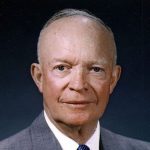
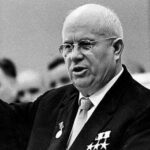 In 1959, President Dwight Eisenhower wanted to convince the Soviet Union that capitalism could greatly benefit the country. If accepted, the Soviet Union would for all intents and purposes become “Americanized” and would probably have been better off. Of course, not everyone agreed with that idea. Nevertheless, Eisenhower, in an effort intended to showcase their ideologies, arranged the “American National Exhibition” in Moscow. To head up the project, they sent Vice President Richard Nixon to attend the opening. What started out as a potentially good idea, quickly took a turn for the worse when Nixon and Soviet leader Khrushchev got into an argument over the topic of capitalism versus communism. Trying to prove someone wrong in their belief system is no easy task, and the conversation quickly got so heated that the vice president of Pepsi intervened and offered the Soviet leader a cup of his delicious, sugary beverage…which he drank…and very much liked.
In 1959, President Dwight Eisenhower wanted to convince the Soviet Union that capitalism could greatly benefit the country. If accepted, the Soviet Union would for all intents and purposes become “Americanized” and would probably have been better off. Of course, not everyone agreed with that idea. Nevertheless, Eisenhower, in an effort intended to showcase their ideologies, arranged the “American National Exhibition” in Moscow. To head up the project, they sent Vice President Richard Nixon to attend the opening. What started out as a potentially good idea, quickly took a turn for the worse when Nixon and Soviet leader Khrushchev got into an argument over the topic of capitalism versus communism. Trying to prove someone wrong in their belief system is no easy task, and the conversation quickly got so heated that the vice president of Pepsi intervened and offered the Soviet leader a cup of his delicious, sugary beverage…which he drank…and very much liked.
Most people who try sodas, like them, and most have a favorite soda that they enjoy whenever they get the opportunity. For Khrushchev and the people of the Soviet Union, this drink was very different from anything they had tasted before, and they were quickly hooked. Years later, the people of the Soviet Union wanted to strike a deal that would bring Pepsi products to their country permanently. The biggest problem, when it came to importing Pepsi to the Soviet Union, was that Soviet money was not accepted throughout the world. They would have to find something they could trade if they wanted to make this deal. So, they cleverly decided to buy Pepsi using a universal currency…vodka!
In the late 1980s, as their initial agreement to serve Pepsi in their country was about to expire, Russia wanted to renew the deal. Unfortunately for them, this time, their vodka wasn’t going to be enough to cover the cost. The question became…what now? They now had to decide just exactly how much they were willing to pay for the addiction that Pepsi really is. In a wild deal, and one that would seem insane to most of us, Russia decided that it was worth giving up a military arsenal big enough to stock a whole country. So, in order to make the 
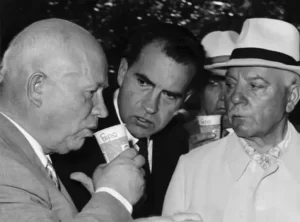 deal, the Russians traded Pepsi a fleet of subs and boats for a whole lot of soda. The new agreement included 17 submarines, a cruiser, a frigate, and a destroyer. Now, that is a whole lot of Pepsi’s worth. In fact, it was three billion dollars’ worth of Pepsi. So, with this historical exchange, Pepsi to become the 6th most powerful military in the world…for a moment anyway. Then, they sold the fleet to a Swedish company for scrap recycling, ending the short-lived military strength of Pepsi. To this day, some people call this a rumor.
deal, the Russians traded Pepsi a fleet of subs and boats for a whole lot of soda. The new agreement included 17 submarines, a cruiser, a frigate, and a destroyer. Now, that is a whole lot of Pepsi’s worth. In fact, it was three billion dollars’ worth of Pepsi. So, with this historical exchange, Pepsi to become the 6th most powerful military in the world…for a moment anyway. Then, they sold the fleet to a Swedish company for scrap recycling, ending the short-lived military strength of Pepsi. To this day, some people call this a rumor.

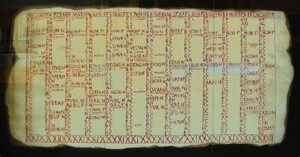 As we move into the new year, we begin to think about how long the year seems…until we look at the year’s end speedily approaching. Then, we realize just how short the year really was, but what if there was a strange “time paradox” that disrupted the “space-time continuum” that we were told about in the movie, Back to the Future? Well, I don’t know if such a “time paradox” could really exist, but in the year 46BC, Julius Caesar did cause a type of disruption in the “space-time continuum” when he decided to revamp the human calendar. Of course, the days went on as usual, but the names of things and the way we looked at them changed. Now, for those of you who hate the whole biannual time change thing…well, this would really blow your body’s natural rhythms out of the water.
As we move into the new year, we begin to think about how long the year seems…until we look at the year’s end speedily approaching. Then, we realize just how short the year really was, but what if there was a strange “time paradox” that disrupted the “space-time continuum” that we were told about in the movie, Back to the Future? Well, I don’t know if such a “time paradox” could really exist, but in the year 46BC, Julius Caesar did cause a type of disruption in the “space-time continuum” when he decided to revamp the human calendar. Of course, the days went on as usual, but the names of things and the way we looked at them changed. Now, for those of you who hate the whole biannual time change thing…well, this would really blow your body’s natural rhythms out of the water.
It seems rather pretty egotistical to just randomly decide that you needed to change up a whole year, and then name the whole thing after yourself to boot, but the Julius Caesar truly thought of himself as a sort of god, I think. It’s not that the pre-Julian Roman calendar didn’t have its problems, because it did, and maybe Caesar thought he was doing a good thing. Still, in the end, the whole maneuver that occurred in the time frame progressing from 46BC to 45BC (note that until Jesus was born, the time was listed as BC, Before Christ and basically went backward. After his birth, time began to go forward, 1AD, 2AD, 3AD, etc. The term anno Domini is Medieval Latin and means “in the year of the Lord” or the year Christ was born.) caused a good bit of confusion…the kind of confusion that would make the time change seem totally insignificant.
The calendar the Romans used were not without fault. The Romans had to periodically add a leap month every few years to keep the calendar year in sync with the solar year. Unfortunately, they had missed a few with the chaos of the civil wars of the late republic. Now if you think the time change is odd, imagine having July suddenly be in the middle of winter in the northern hemisphere. That’s what was happening due to the missed additional leap months that were not happening. The calendar was obviously not well planned. So, to fix things, Caesar chose to take one year, and make a number of drastic changes designed to “get things back on track” once and for all. Nicknamed “the Year of the Consulship of Caesar and Lepidus” or the year of confusion, 46BC had two extra leap months inserted by Julius Caesar. This was in order to make his newly formed Julian Calendar match up with the seasonal year. In the end, 46BC was 445 days long and is the longest year in human history. Julius Caesar added Mercedonius (23 days) and two other intercalary months (33 and 34 days respectively) to the 355-day lunar year, to recalibrate the calendar in preparation for his calendar reform, which went into effect in 45 BC. Of course, the actual planetary orbit-year remained the same. He couldn’t change that. There were still problems with the calendar, but they probably weren’t quite as significant as the old Roman calendar, which required a manual reset of the year periodically.
The Julian Calendar would remain the standard in the western world for over 1600 years, until superseded by the Gregorian Calendar in 1582. The Gregorian calendar that is still widely used today. It is a solar calendar that was first introduced in 1582 by the Catholic Church and replaced the Julian calendar. The Gregorian 
 calendar is used for non-religious administration around the world and has been adopted by 168 countries as their official calendar. The principal change was to space leap years differently so as to make the average calendar year 365.2425 days long. For church functions, the church calendar is in place, and the Jewish people use the Hebrew calendar. I’m sure there are nations that use some other form of calendar, but the Gregorian calendar seems to keep the seasons aligned with the calendar pretty well.
calendar is used for non-religious administration around the world and has been adopted by 168 countries as their official calendar. The principal change was to space leap years differently so as to make the average calendar year 365.2425 days long. For church functions, the church calendar is in place, and the Jewish people use the Hebrew calendar. I’m sure there are nations that use some other form of calendar, but the Gregorian calendar seems to keep the seasons aligned with the calendar pretty well.

 When things started to change for the worse at the hospital where my nephew, Allen Beach and his wife, Gaby worked, they decided to get ahead of the situation. So, they made the move to Eugene, Oregon in search of a better life for themselves. Now, a little over a year later, they are nicely settled, and loving their jobs. Gaby works at the Veteran’s Administration, working in a VA Hospital, while Allen works as a Care Management Associate for Aetna. Allen works with doctors to coordinate care plans that align with Aetna health insurance, which was acquired by CVS a few years ago. Allen works out of his home, which as we all know is a fairly new phenomenon these days, stepped up with the Covic pandemic. Nevertheless, while working from home seemed strange to many of us, it is looked upon as rather a primo kind of job these days, and Allen is totally loving it…and I’m sure their dog, Oly loves it too.
When things started to change for the worse at the hospital where my nephew, Allen Beach and his wife, Gaby worked, they decided to get ahead of the situation. So, they made the move to Eugene, Oregon in search of a better life for themselves. Now, a little over a year later, they are nicely settled, and loving their jobs. Gaby works at the Veteran’s Administration, working in a VA Hospital, while Allen works as a Care Management Associate for Aetna. Allen works with doctors to coordinate care plans that align with Aetna health insurance, which was acquired by CVS a few years ago. Allen works out of his home, which as we all know is a fairly new phenomenon these days, stepped up with the Covic pandemic. Nevertheless, while working from home seemed strange to many of us, it is looked upon as rather a primo kind of job these days, and Allen is totally loving it…and I’m sure their dog, Oly loves it too. 

Allen and Gaby like to take walks through a beautiful park they found along the Willamette River, and they try to get out and take Oly for walks as often as they can. Right now, they are renting, but as soon as the housing market settles down, they are planning to buy another house. They loved their house here in Casper, Wyoming, and I’m sure it was hard to go back to renting. Now that they are both settled in jobs, and they know that they like the area, they are ready for take the next step and buy a house again.
My sister, Caryl (Allen’s mom) and her husband, Mike Reed took a trip to visit Allen and Gaby in early November, and they all had a great time. Caryl and Mike took their motorhome, and they took a week to travel along the Oregon Coast. Allen and Gaby had such a great time. They are looking forward to more trips along 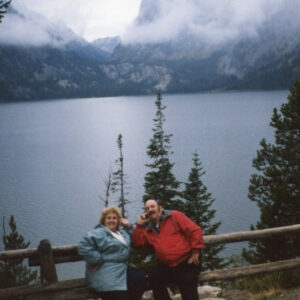
 the coast now that they’ve seen some of the towns with Caryl and Mike. Their trip down the coast included Crater Lake, which was a place our parents, Allen’s grandparents, Allen and Collene Spencer loved to go. I love the picture of Allen and Gaby there. I wish I had known they were there, because I would have had them take a picture like the one his grandparents took. Maybe next time they go there. I’m happy they love their new city, and glad for Caryl and Mike that it isn’t too awfully far away. I’m sure there will be lots of future visits. Today is Allen’s birthday. Happy birthday Allen!! Have a great day!! We love you!!
the coast now that they’ve seen some of the towns with Caryl and Mike. Their trip down the coast included Crater Lake, which was a place our parents, Allen’s grandparents, Allen and Collene Spencer loved to go. I love the picture of Allen and Gaby there. I wish I had known they were there, because I would have had them take a picture like the one his grandparents took. Maybe next time they go there. I’m happy they love their new city, and glad for Caryl and Mike that it isn’t too awfully far away. I’m sure there will be lots of future visits. Today is Allen’s birthday. Happy birthday Allen!! Have a great day!! We love you!!
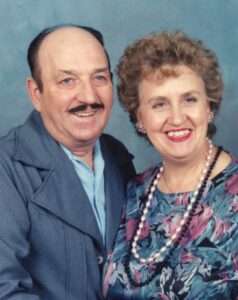
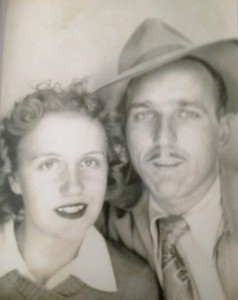 As with my dad, Allen Spencer, the longer my mom, Collene Spencer is in Heaven, the more I miss her. I was actually thinking about her a couple of days ago, not that I don’t think of her every day, but this was on a more specific subject. Mom was such a deeply Christian woman, and she worked very hard to educate herself in God’s ways and in His Word. Now, as I take my own walk in the Lord, I find myself reflecting on all the people my mom influenced to turn their lives over to the Lord. My parents were great spiritual leaders, and while they didn’t travel the world evangelizing, they spoke to those they could, and their good clean lives did the rest. After my mom’s funeral, I was surprised at the people who told me about how my parents’ lives had influenced them. To say the least, I was amazed. My parents, in their own quiet, unassuming way drew many people to the Lord.
As with my dad, Allen Spencer, the longer my mom, Collene Spencer is in Heaven, the more I miss her. I was actually thinking about her a couple of days ago, not that I don’t think of her every day, but this was on a more specific subject. Mom was such a deeply Christian woman, and she worked very hard to educate herself in God’s ways and in His Word. Now, as I take my own walk in the Lord, I find myself reflecting on all the people my mom influenced to turn their lives over to the Lord. My parents were great spiritual leaders, and while they didn’t travel the world evangelizing, they spoke to those they could, and their good clean lives did the rest. After my mom’s funeral, I was surprised at the people who told me about how my parents’ lives had influenced them. To say the least, I was amazed. My parents, in their own quiet, unassuming way drew many people to the Lord.
While my mom’s Christian walk is so important, it is not the only endearing quality my mom possessed. She loved making her daughters smile and would go to great lengths to accomplish her goals. She woke us up each  day with a song…often a silly song. If we didn’t smile, she would sometimes make funny faces or act in a funny way. Mom’s laugh was infectious, and you really couldn’t help but laugh. As I think back of the days of my childhood, I realize more and more, just how blessed I am, and how blessed I was then. Mom taught her daughters the things we would need to be successful in whatever we undertook, but first and foremost, she taught us how to care for a family and a home. We all knew how to cook, and we are all good cooks. Mom came from a long line of really great cooks, and she passed all the knowledge down to us. Like her mom, Hattie Byer, she could make a great meal out of just about anything. Mom was born toward the end of the Great Depression, and the people of that era knew that it was essential to be frugal. She had 8 siblings, and Grandma and Grandpa (George Byer) never turned away a hungry soul. The food just had to stretch, and it did. And it still tasted great, even if there was a little more water, a couple more potatoes, and a little less meat in the stew. Mom learned from the best, and her daughters and our families benefitted.
day with a song…often a silly song. If we didn’t smile, she would sometimes make funny faces or act in a funny way. Mom’s laugh was infectious, and you really couldn’t help but laugh. As I think back of the days of my childhood, I realize more and more, just how blessed I am, and how blessed I was then. Mom taught her daughters the things we would need to be successful in whatever we undertook, but first and foremost, she taught us how to care for a family and a home. We all knew how to cook, and we are all good cooks. Mom came from a long line of really great cooks, and she passed all the knowledge down to us. Like her mom, Hattie Byer, she could make a great meal out of just about anything. Mom was born toward the end of the Great Depression, and the people of that era knew that it was essential to be frugal. She had 8 siblings, and Grandma and Grandpa (George Byer) never turned away a hungry soul. The food just had to stretch, and it did. And it still tasted great, even if there was a little more water, a couple more potatoes, and a little less meat in the stew. Mom learned from the best, and her daughters and our families benefitted.

 Mom was such a sweet and loving person, and always tried to do right by all who crossed her path. Mom always tried to walk in love toward her fellow man. She was known to stop and pray for someone who had a need. She was a generous woman who always gave as much as she could. Her giving nature, a reflection on her parents and her loving relationship with our dad, showed in everything she did, and was something she tried to also instill in her daughters. We simply couldn’t have asked for a better mom, or dad. Today would have been Mom’s 88th birthday. Happy birthday in Heaven, Mom. We love and miss you very much, and we look forward to seeing you again when we all go to Heaven.
Mom was such a sweet and loving person, and always tried to do right by all who crossed her path. Mom always tried to walk in love toward her fellow man. She was known to stop and pray for someone who had a need. She was a generous woman who always gave as much as she could. Her giving nature, a reflection on her parents and her loving relationship with our dad, showed in everything she did, and was something she tried to also instill in her daughters. We simply couldn’t have asked for a better mom, or dad. Today would have been Mom’s 88th birthday. Happy birthday in Heaven, Mom. We love and miss you very much, and we look forward to seeing you again when we all go to Heaven.
 Sometimes, there can be a rare phenomenon that happens by chance, but unlike the phenomenon of twins being born on different days, the phenomenon that took place on December 31, 1899, while not totally planned, had to be helped just a little bit. On that night, the last night of the year, the passenger steamer, SS Warrimoo was quietly making its way through the dark waters of the mid Pacific Ocean on its way from Vancouver, Canada to Australia. In the days without GPS, the navigation was calculated by the stars. It was very accurate. That night, the navigator had just finished working out a star fix and brought the results to Captain John DS Phillips. The Warrimoo’s position was LAT 0º 31′ N and LONG 179 30′ W. The date was December 31, 1899. First mate Payton broke in saying, “Know what this means? We’re only a few miles from the intersection of the Equator and the International Date Line.” At first thought many of us would not see the significance of that, but Captain Phillips saw it, and he was just “prankish” enough to take full advantage of the opportunity for achieving the “navigational freak of a lifetime.”
Sometimes, there can be a rare phenomenon that happens by chance, but unlike the phenomenon of twins being born on different days, the phenomenon that took place on December 31, 1899, while not totally planned, had to be helped just a little bit. On that night, the last night of the year, the passenger steamer, SS Warrimoo was quietly making its way through the dark waters of the mid Pacific Ocean on its way from Vancouver, Canada to Australia. In the days without GPS, the navigation was calculated by the stars. It was very accurate. That night, the navigator had just finished working out a star fix and brought the results to Captain John DS Phillips. The Warrimoo’s position was LAT 0º 31′ N and LONG 179 30′ W. The date was December 31, 1899. First mate Payton broke in saying, “Know what this means? We’re only a few miles from the intersection of the Equator and the International Date Line.” At first thought many of us would not see the significance of that, but Captain Phillips saw it, and he was just “prankish” enough to take full advantage of the opportunity for achieving the “navigational freak of a lifetime.”
Phillips called his navigators to the bridge to check and double check the ship’s position. It simply would not do for there to be any miscalculation. He changed course slightly so as to bear directly on his mark. Then, he adjusted the engine speed for perfect timing. The calm weather and clear night worked in his favor. With determined and careful maneuvering, the SS Warrimoo was in perfect position at midnight. The ship now sat on the Equator at exactly the point where it crossed the International Date Line! This seems like a minor thing, but  the consequences of this bizarre position were actually many. This put the forward part (bow) of the ship was in the Southern Hemisphere and in the middle of summer; the rear (stern) was in the Northern Hemisphere and in the middle of winter; the date in the aft part of the ship was December 31, 1899; in the bow (forward) part it was January 1, 1900. They had managed to place the ship not only in two different days, two different months, two different years, and two different seasons…but, in two different centuries…all at the same time!! Amazing, and unlikely to ever happen again, unless it was specifically planned.
the consequences of this bizarre position were actually many. This put the forward part (bow) of the ship was in the Southern Hemisphere and in the middle of summer; the rear (stern) was in the Northern Hemisphere and in the middle of winter; the date in the aft part of the ship was December 31, 1899; in the bow (forward) part it was January 1, 1900. They had managed to place the ship not only in two different days, two different months, two different years, and two different seasons…but, in two different centuries…all at the same time!! Amazing, and unlikely to ever happen again, unless it was specifically planned.

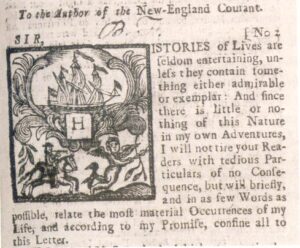 Out of the blue, in 1722, the readers of a paper published in Boston, called The Courant, were treated to and fascinated by letters that were sent in by a widow with an razor-sharp wit and a gift for sarcasm. Her name was Mrs Silence Dogood. Mrs Dogood had an unusual sense of humor. She liked to poke fun at such illustrious institutions such as Harvard. For that, many of her readers loved her and became avid followers. She wasn’t afraid to speak her mind, and she wasn’t afraid to call a spade a spade. She told it like it was, and she didn’t care what others thought of her.
Out of the blue, in 1722, the readers of a paper published in Boston, called The Courant, were treated to and fascinated by letters that were sent in by a widow with an razor-sharp wit and a gift for sarcasm. Her name was Mrs Silence Dogood. Mrs Dogood had an unusual sense of humor. She liked to poke fun at such illustrious institutions such as Harvard. For that, many of her readers loved her and became avid followers. She wasn’t afraid to speak her mind, and she wasn’t afraid to call a spade a spade. She told it like it was, and she didn’t care what others thought of her.
So…just who was Mrs Dogood? Rumor had it that she was just an old widow woman who had been around long enough to have long lost any concern over what people thought of her. Maybe her many years of life had given her insight that no one else had. I remember reading Ann Lander’s column when I was a girl and a young married woman. Her advise always seemed so wise. I remember a number of articles from various columnists, and there again, my thought was, “How did they know so much?” I was sure they must have multiple degrees. Of course, while they might have had a degree or two, that did not make them any smarter than the next guy…and this type of writing was usually more about logic and common sense, that learned skill. So, who was Mrs Silence Dogood? That is the question of the day.
The answer to that question will most likely shock you. The reality is that Mrs Silence Dogood was the pen name used by Benjamin Franklin. Now, while Benjamin Franklin was a very intelligent man, as we all know. the fact remains that at the time he was writing under the pen name of Mrs Silence Dogood, Franklin was a boy of just 16 years. He was too young to be taken seriously or to have any possibility of getting his writings published, so he came up with an ingenious solution. His goal was to have his work published in the New-England Courant…a newspaper founded and published by his brother James Franklin. He took this goal seriously, especially after he was denied several times when he tried to publish letters under his own name in the Courant. Mrs Silence Dogood wrote 14 letters, which were first printed in 1722, and can be read here.
At the time of the printing of those letters, Franklin worked as an apprentice in his older brother’s printing shop in Boston. Franklin was a boy who had yet to get something he wrote published, so at 16, and desperate to finally receive the respect and recognition he felt he justly deserved. His idea was to create the persona of a 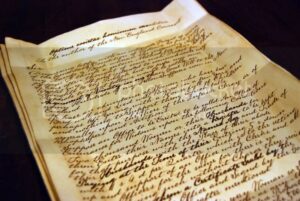
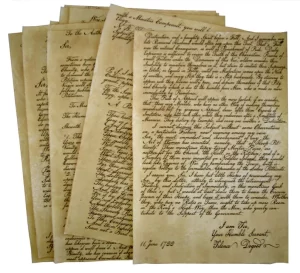 middle-aged widow named Silence Dogood. Once every two weeks, Franklin left a letter under the door of his brother’s printing shop. A total of 14 letters were sent. For months no one knew the identity of Mrs Dogood, but everyone was completely enthralled. Those letters were the talk of the town…even after they found out they were written by a 16-year-old Benjamin Franklin.
middle-aged widow named Silence Dogood. Once every two weeks, Franklin left a letter under the door of his brother’s printing shop. A total of 14 letters were sent. For months no one knew the identity of Mrs Dogood, but everyone was completely enthralled. Those letters were the talk of the town…even after they found out they were written by a 16-year-old Benjamin Franklin.
 Abraham Lincoln was a great president, one of the greatest, but while the presidency defined his life in our minds, it was only a small part of the sum total of his life. His presidency ran from 1861 to his assassination on April 14, 1865, and subsequent death on April 15, 1865. Nevertheless, Abraham Lincoln was an amazing president and brought this country out of a dark time in our history.
Abraham Lincoln was a great president, one of the greatest, but while the presidency defined his life in our minds, it was only a small part of the sum total of his life. His presidency ran from 1861 to his assassination on April 14, 1865, and subsequent death on April 15, 1865. Nevertheless, Abraham Lincoln was an amazing president and brought this country out of a dark time in our history.
Lincoln was a self-educated man, and he tried a number of occupations. One of them was bartending. It’s strange to think of President Lincoln as a licensed bartender. It’s not that there is anything wrong with bartending, and in fact, many American historical figures were involved in the alcohol industry. George Washington owned the largest whiskey distillery according to Mount Vernon’s official website, and according to Monticello’s website, Thomas Jefferson was also fascinated with beer brewing. Even Sam Adams, who was not a brewer, was involved in the industry, in that he made malt for the breweries. For his part, Lincoln, who would become the 16th president, opened up a bar called “Berry and Lincoln” with his friend William F Berry in New Salem, Illinois in 1833.
When Lincoln came home from serving in the Black Hawk War, which was the war between the United States and Native Americans, he didn’t really know what he wanted to do with the rest of his life. He thought about becoming a blacksmith, but then he reconnected with William Berry, who had been in his militia group. The two men hit it off, and eventually decided to open a general store in New Salem, Illinois. The store was called the Berry-Lincoln Grocery, and maybe it would have been better if this was as far as things went. At that time, stores were allowed to sell larger quantities of alcohol for drinking off-site. However, if they wanted their customers to be able to drink inside the sore, they would need to purchase a license. They were granted a tavern license which cost $7 in those days. Berry took charge of getting the license. They sold a variety of brandy flavors, including apple brandy, peach brandy, and even French brandy, among others. They also sold wine, rum, and two kinds of gin.
Lincoln wasn’t much interested in tending bar. He was more focused on serving as postmaster. So, it was decided that Barry would run the bar part of the store and Lincoln would run the store’s post office. For a time, the Berry-Lincoln Grocery did fine, but then things began to change. It turned out Berry was an alcoholic who took advantage of the store’s license to sell drinks. It gave him the ability to drink while working, and  sometimes he was too drunk to function. So, Lincoln took more and more responsibility. Unfortunately, the whole situation led to the partners, taking on more debt. Eventually, Lincoln was done with the whole thing, and he sold his interest in the store to Berry in 1833. Just two years later, before Lincoln could be completely freed of the place, Berry died, leaving Lincoln to inherit the business’s debts. It was an awful situation, which was only resolved when Lincoln was elected to Congress in 1847, giving him enough of an income to clear the debts. Having had quite enough of the bartending/store owning industry, Lincoln became a lawyer and eventually a politician, which led to the great president we have all studied about, as well, of course, as his assassination.
sometimes he was too drunk to function. So, Lincoln took more and more responsibility. Unfortunately, the whole situation led to the partners, taking on more debt. Eventually, Lincoln was done with the whole thing, and he sold his interest in the store to Berry in 1833. Just two years later, before Lincoln could be completely freed of the place, Berry died, leaving Lincoln to inherit the business’s debts. It was an awful situation, which was only resolved when Lincoln was elected to Congress in 1847, giving him enough of an income to clear the debts. Having had quite enough of the bartending/store owning industry, Lincoln became a lawyer and eventually a politician, which led to the great president we have all studied about, as well, of course, as his assassination.
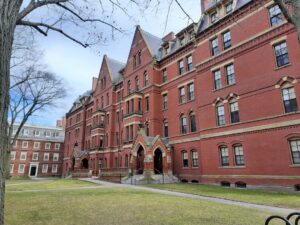
 Because I live in the United States, the history of my country doesn’t really go back beyond 1492, and even then, the buildings, institutions, cities, and such would seem pretty primitive compared to their “Old World” counterparts. As old as some of our buildings are, they are new compared to some of the “Old World” structures. The American education system had primitive beginnings to, and so it’s hard to think of the beginning of universities here, and yet, the oldest university in the continental United States is Harvard, which was established in 1636. That seem very old to me, but when compared to the oldest universities in the world, that is a baby university.
Because I live in the United States, the history of my country doesn’t really go back beyond 1492, and even then, the buildings, institutions, cities, and such would seem pretty primitive compared to their “Old World” counterparts. As old as some of our buildings are, they are new compared to some of the “Old World” structures. The American education system had primitive beginnings to, and so it’s hard to think of the beginning of universities here, and yet, the oldest university in the continental United States is Harvard, which was established in 1636. That seem very old to me, but when compared to the oldest universities in the world, that is a baby university.
The universities in the United States, were modeled after some of the universities in Europe, like the University of Oxford. The University of Oxford is older than the Aztec Empire, which is said to have originated in 1325. The University of Oxford first opened its doors to students all the way back in 1096, making it the oldest university 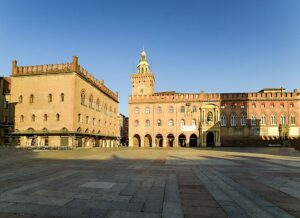 in the English-speaking world and the world’s second-oldest university in continuous operation. That seems an impossible date, but while 1096 is a very, very long time ago, the University of Oxford is not even the oldest university in the world. In fact, it is actually the fourth oldest university in the world. Still, it is quite prestigious. “Oxford has educated a wide range of notable alumni, including 30 prime ministers of the United Kingdom and many heads of state and government around the world. As of October 2022, 73 Nobel Prize laureates, 4 Fields Medalists, and 6 Turing Award winners have matriculated, worked, or held visiting fellowships at the University of Oxford, while its alumni have won 160 Olympic medals. Oxford is the home of numerous scholarships, including the Rhodes Scholarship, one of the oldest international graduate scholarship programs.” All that is to be expected for a university with such long standing.
in the English-speaking world and the world’s second-oldest university in continuous operation. That seems an impossible date, but while 1096 is a very, very long time ago, the University of Oxford is not even the oldest university in the world. In fact, it is actually the fourth oldest university in the world. Still, it is quite prestigious. “Oxford has educated a wide range of notable alumni, including 30 prime ministers of the United Kingdom and many heads of state and government around the world. As of October 2022, 73 Nobel Prize laureates, 4 Fields Medalists, and 6 Turing Award winners have matriculated, worked, or held visiting fellowships at the University of Oxford, while its alumni have won 160 Olympic medals. Oxford is the home of numerous scholarships, including the Rhodes Scholarship, one of the oldest international graduate scholarship programs.” All that is to be expected for a university with such long standing.
The other three oldest universities are the University of Bologna, a public research university in Bologna, Italy, founded in 1088 at number three; the Al-Azhar University, a public university in Cairo, Egypt, founded in 970 at number two; and the oldest university in the world, the University of al-Qarawiyyin, located in Fes, Morocco, founded in 859. It amazes me that there could be universities that have been around for that many years. I 
 think that mostly, it’s not the institutions of higher learning that amaze me, but more the structures that held them and the institutions of people who ran them. I think that there has always been a desire to learn more, so the universities themselves make perfect sense, but the buildings built so long ago that have somehow managed to remain standing, while so many other structures are in total disrepair, is astounding.
think that mostly, it’s not the institutions of higher learning that amaze me, but more the structures that held them and the institutions of people who ran them. I think that there has always been a desire to learn more, so the universities themselves make perfect sense, but the buildings built so long ago that have somehow managed to remain standing, while so many other structures are in total disrepair, is astounding.

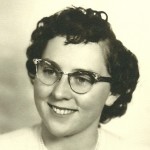 My husband’s aunt, Esther Hein is the middle child of her mom, Vina Hein’s children and the oldest of her dad, Walt Hein’s children. Theirs was a blended family, because Grandma Hein was divorced from her first husband. Sadly, Esther also now finds herself the last of those five siblings. The last of her siblings, Butch Hein was killed in a car accident on October 13, 2023, in Forsyth. As the middle child, I’m sure Esther never expected to be the last of the siblings alive, but now, here she is. Life has not been easy for Esther these past few years. In addition to the health problems Esther has had since Covid started, she has also been dealing with a daughter, Cindy who has been in poor health. That has probably been the hardest thing, because she couldn’t see Cindy much. Cindy’s immune system is compromised, so it is too dangerous. Many people, including me, have been praying over both of them.
My husband’s aunt, Esther Hein is the middle child of her mom, Vina Hein’s children and the oldest of her dad, Walt Hein’s children. Theirs was a blended family, because Grandma Hein was divorced from her first husband. Sadly, Esther also now finds herself the last of those five siblings. The last of her siblings, Butch Hein was killed in a car accident on October 13, 2023, in Forsyth. As the middle child, I’m sure Esther never expected to be the last of the siblings alive, but now, here she is. Life has not been easy for Esther these past few years. In addition to the health problems Esther has had since Covid started, she has also been dealing with a daughter, Cindy who has been in poor health. That has probably been the hardest thing, because she couldn’t see Cindy much. Cindy’s immune system is compromised, so it is too dangerous. Many people, including me, have been praying over both of them.
Esther has always had such a soft heart. Things that happened to people Esther loved, even if they weren’t life threatening, upset her terribly. All she wants is for everyone she loves to be ok. Of course, that is what we all want for our loved ones, but Esther wears her heart on her sleeve. Sometimes, it’s hard to see or hear her be worried about the people she cares about, but then, I guess it’s hard to watch anyone be worried about someone. It is much better to see Esther when she is happy and showing her love for people in the things she makes and does for them. I will never forget how pleased my in-laws, Walt (Esther’s half brother) and Joann Schulenberg were with the things she made them. She made curtains for their bathroom, and several paintings for their living room. They didn’t get to see her very often, because she lives in Oregon, and they lived in Casper, Wyoming, but they did make trips to see her after my father-in-law retired. They visited he for a number of years, but then my mother-in-law was diagnosed with Alzheimer’s Disease, and travel wasn’t so easy anymore. I know my father-in-law missed going to see his sister, and she missed him too.
For Esther, not being able to see her brother and sister-in-law, was maybe worse that other people she didn’t 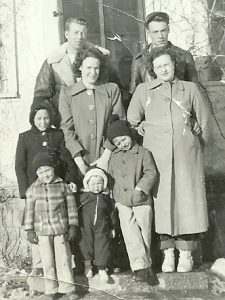
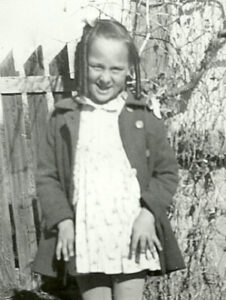 get to see much, because as a little girl, when her brother was already married, Esther lived with them during the winter months. School was very important, and the Montana winters didn’t always make it easy to get Esther into town from the family ranch. The three of them became close, even if Ester had to be told to behave by my mother-in-law a number of times. Kids outgrow the antics of childhood eventually, and then Esther and her sister-in-law just became friends. Those were good times though. I know Esther’s help entertaining her young nieces, Marlyce Schulenberg and Debbie Cook, and maybe nephew Bob Schulenberg was nice for my mother-in-law too. Those would definitely qualify to be called the “good old days” for sure. Today is Esther’s 83rd birthday. Happy birthday Esther!! Have a great day!! We love you!!
get to see much, because as a little girl, when her brother was already married, Esther lived with them during the winter months. School was very important, and the Montana winters didn’t always make it easy to get Esther into town from the family ranch. The three of them became close, even if Ester had to be told to behave by my mother-in-law a number of times. Kids outgrow the antics of childhood eventually, and then Esther and her sister-in-law just became friends. Those were good times though. I know Esther’s help entertaining her young nieces, Marlyce Schulenberg and Debbie Cook, and maybe nephew Bob Schulenberg was nice for my mother-in-law too. Those would definitely qualify to be called the “good old days” for sure. Today is Esther’s 83rd birthday. Happy birthday Esther!! Have a great day!! We love you!!
 When I first heard about the bizarre phenomenon found under the home of Benjamin Franklin, I thought of a few possibilities. The remains, found in 1998, consisted of 1,200 bones are believed to be from more than 15 human bodies found in the basement of Ben Franklin’s house. Six of the bodies were children. My first thought was, “Please tell me that this is some Indian burial site, or that there is some logical explanation as to why there would be bodies buried in this hero Founding Father’s home.” I have always liked Ben Franklin. I found his “antics” to be so interesting. To say the least, he was a bit strange in his experimentations, and that was enough to make me wonder (and hope it wasn’t so) if Ben Franklin could possibly have some horrid alter ego. He wouldn’t be the first scientist to go off the deep end to experiment on human bodies, but then again, there certainly are people today that have chosen to donate their bodies to science, so why couldn’t that be the case back then. I prayed that was the case.
When I first heard about the bizarre phenomenon found under the home of Benjamin Franklin, I thought of a few possibilities. The remains, found in 1998, consisted of 1,200 bones are believed to be from more than 15 human bodies found in the basement of Ben Franklin’s house. Six of the bodies were children. My first thought was, “Please tell me that this is some Indian burial site, or that there is some logical explanation as to why there would be bodies buried in this hero Founding Father’s home.” I have always liked Ben Franklin. I found his “antics” to be so interesting. To say the least, he was a bit strange in his experimentations, and that was enough to make me wonder (and hope it wasn’t so) if Ben Franklin could possibly have some horrid alter ego. He wouldn’t be the first scientist to go off the deep end to experiment on human bodies, but then again, there certainly are people today that have chosen to donate their bodies to science, so why couldn’t that be the case back then. I prayed that was the case.
At this point, many people would immediately assume that Ben Franklin was some kind of closet killer, who tortured and murdered his victims. It would be thought that the world had been so naive, that we lived in the dark for years, but before you go crafting a murder mystery about him, please be aware that it was revealed that the bodies were used in the study of human anatomy. So, it actually was bodies donated for scientific 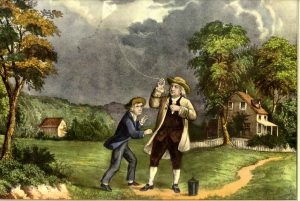 research. I certainly didn’t know that they did that sort of thing back then, but it seems that they did.
research. I certainly didn’t know that they did that sort of thing back then, but it seems that they did.
The house, located in London, England was undergoing some conservation work in 1998, when the bones were discovered. Some of the bodies were dismembered, or had trepanned skulls, which is skulls with holes drilled through them. Ben Franklin had lived home in London for nearly twenty years leading up to the signing of the Declaration of Independence. It was more than 200 years later, when the conservation work uncovered the 15 bodies in the basement, buried in a secret, windowless room beneath the garden. While on could imagine horrible things, “The most plausible explanation is not mass murder, but an anatomy school run by Benjamin Franklin’s young friend and protege, William Hewson.” So, it would seem that Ben Franklin either loaned the home to Hewson (a surgeon), stored the bodies for Hewson, or allowed Hewson to do his scientific experiments in the room in the Franklin house. Whatever the case may be, it is apparently well enough documented that the authorities were satisfied that Ben Franklin wasn’t personally involved.
One such speculation was that “Anatomy was still in its infancy, but the day’s social and ethical mores frowned upon it. … A steady supply of human bodies was hard to come by legally, so Hewson, Hunter, and the field’s other pioneers had to turn to grave robbing—either paying professional ‘resurrection men’ to procure cadavers 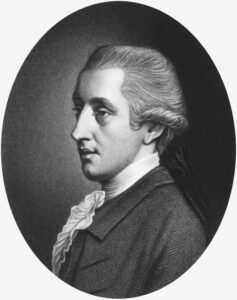 or digging them up themselves—to get their hands on specimens. Researchers think that 36 Craven was an irresistible spot for Hewson to establish his own anatomy lab. The tenant was a trusted friend, the landlady was his mother-in-law, and he was flanked by convenient sources for corpses. Bodies could be smuggled from graveyards and delivered to the wharf at one end of the street or snatched from the gallows at the other end. When he was done with them, Hewson simply buried whatever was left of the bodies in the basement, rather than sneak them out for disposal elsewhere and risk getting caught and prosecuted for dissection and grave robbing.” Some people speculate that Ben Franklin knew about the goings on, but was not personally involved, still, they thought he might have gone to the lab a few times to check out the proceedings. I hate to think that he knew anything about it, and I would prefer to think that the study of anatomy was done in his absence, but I suppose that our modern-day anatomy studies and autopsies were probably pioneered in a basement somewhere.
or digging them up themselves—to get their hands on specimens. Researchers think that 36 Craven was an irresistible spot for Hewson to establish his own anatomy lab. The tenant was a trusted friend, the landlady was his mother-in-law, and he was flanked by convenient sources for corpses. Bodies could be smuggled from graveyards and delivered to the wharf at one end of the street or snatched from the gallows at the other end. When he was done with them, Hewson simply buried whatever was left of the bodies in the basement, rather than sneak them out for disposal elsewhere and risk getting caught and prosecuted for dissection and grave robbing.” Some people speculate that Ben Franklin knew about the goings on, but was not personally involved, still, they thought he might have gone to the lab a few times to check out the proceedings. I hate to think that he knew anything about it, and I would prefer to think that the study of anatomy was done in his absence, but I suppose that our modern-day anatomy studies and autopsies were probably pioneered in a basement somewhere.

